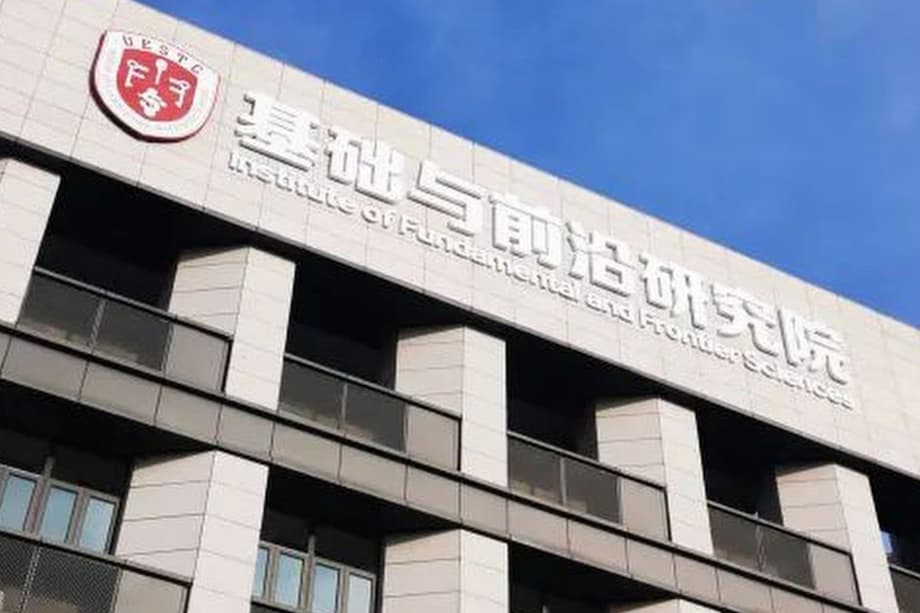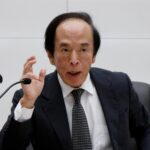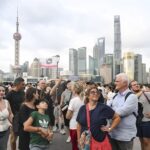Why this move matters
One of South Korea’s most prominent communications researchers, Song Iick-ho, has left the Korea Advanced Institute of Science and Technology after more than three decades to join the University of Electronic Science and Technology of China in Chengdu. The Chinese campus appears on a United States government risk list that identifies institutions seen as national security concerns. Song will teach and conduct research at the Institute of Fundamental and Frontier Sciences, with work that spans signal detection, communications theory, and artificial intelligence. The move gives a leading Chinese engineering school a senior voice in foundational wireless research. It also places a veteran Korean scholar inside a university that faces tighter controls from Washington on access to American technology. Song is a fellow of the Institute of Electrical and Electronics Engineers. His record includes over 150 journal papers, 140 conference papers, five international patents, and 26 patents filed in Korea.
Song joined UESTC this year after serving at the Korea Advanced Institute of Science and Technology since 1988. His published work covers wireless mobile communication theory, the mathematics of how radios detect and decode signals, and related algorithms that drive performance in modern networks. Areas such as channel estimation, interference cancellation, and coding can decide how many devices connect reliably, how fast data can move, and how secure a link can be made. These are core building blocks for 5G and for the 6G systems that are now taking shape. The university said he has led 15 research projects funded by the National Research Foundation of Korea. He declined to comment on his new role.
Talent moves between Asian research powerhouses are common. This one stands out because it connects a senior Korean expert with a Chinese institution that has been restricted by the United States. Risk designations can limit what American companies sell to a university and can place collaborations under closer review. Universities and researchers outside the United States also feel the ripple effects when they rely on US origin software, laboratory tools, or cloud services.
Who is Song Iick-ho
Song built his career on the foundations of digital communications. The field studies how to represent information in bits, send those bits across noisy radio channels, and recover messages at the receiver with minimal errors. That work touches almost every layer of a modern network, from radio front ends and baseband processing to coding, modulation, and network optimization. His record of patents and funded projects shows deep engagement with real world systems as well as theory. That combination is common among IEEE fellows in communications, where mathematical advances are often translated into working systems and standards.
A career built on wireless fundamentals
Signals that carry voice, video, or sensor data must be detected amid interference, fading, and noise. Researchers like Song create algorithms that estimate the state of the channel, separate overlapping streams, and decide which bits are most likely to be correct. Techniques such as multiple input multiple output antenna processing, adaptive equalization, and soft decision decoding have reshaped how much information a link can carry and how robust a connection can be inside crowded spectrum. The same methods underpin cellular base stations, Wi Fi networks, satellite links, and radar. Work at this level rarely attracts headlines, yet it defines the gains that make each new generation of networks more capable than the last.
Teaching and mentoring are also part of the footprint. Senior professors running large labs guide doctoral students and postdoctoral researchers who later populate industry and academia. A move of this type brings that training pipeline to a new campus. It can change what topics young researchers pursue and which industrial partners a lab works with.
What is UESTC and why the US flagged it
The University of Electronic Science and Technology of China is a major public research university in the city of Chengdu in Sichuan province. It is known inside China for strength in electronic engineering, communications, information science, and applied physics. The campus hosts a wide range of state key laboratories and national research platforms. Its graduates work across telecom equipment, chip design, aerospace, and defense linked enterprises. The university is part of the Double First Class initiative that backs selected Chinese campuses to reach world class status in priority disciplines.
How US risk lists shape cooperation
The United States government maintains several lists that restrict trade or collaboration with selected entities. These include the Entity List and the Unverified List under the Department of Commerce, the Military End User list under export controls, and sanctions lists maintained by the Treasury Department. When a university appears on a list, US companies often need licenses to send hardware, software, or technology. The hurdle is higher for items that can be used to build advanced weapons or surveillance tools. Many collaborations still proceed in basic science, but controls can slow procurement, limit access to certain components, and create reputational risk for partners. Universities outside the United States confront practical questions when their labs depend on US origin GPUs, electronic design automation software, precision test equipment, or cloud computing services that are subject to compliance checks.
Why this affects day to day lab work
Controls are not only about shipping physical equipment. They can cover intangible technology transfer, like sharing controlled technical data or remote access to restricted tools. A listed campus may still publish openly and attend major conferences, but teams that rely on controlled items face added steps. Export control offices at universities now spend more time reviewing memoranda of understanding, visiting scholar programs, and joint labs. Industry partners pay closer attention to who has access to prototype chips, source code, or specialized firmware. Even routine tasks like renewing software licenses or booking cloud compute can require license checks when a listed entity is involved.
What will Song study and build in Chengdu
The Institute of Fundamental and Frontier Sciences at UESTC supports cross disciplinary research in mathematics, physics, information science, and advanced engineering. Song’s brief focuses on signal detection, communications theory, and artificial intelligence. Signal detection seeks the best way to decide which symbols were sent when the channel is imperfect. Communications theory sets the limits and describes how to get close to those limits. Artificial intelligence now assists in both tasks by learning channel behavior, compressing or denoising signals, and speeding up optimization steps that used to be done by hand.
From 5G to 6G, why algorithms still drive progress
Faster radios are not only a question of spectrum or hardware speed. Gains often come from better mathematics. In 5G, massive antenna arrays and sophisticated coding made it possible to serve many users with high reliability. 6G research adds even larger arrays, reconfigurable surfaces on walls and towers, tighter integration of terrestrial and satellite links, and new spectrum at sub terahertz frequencies. Each novelty introduces tougher detection and estimation problems. AI can help design waveforms, schedule network resources, and predict interference. Work in this area can raise data rates, lower latency, and improve the energy efficiency of devices and base stations.
Applications are broad. Industrial robots rely on ultra reliable low latency links. Cars exchange sensor data over vehicle to everything networks. Remote surgery and immersive education demand high quality streams with tight delay budgets. The same theory also shows up in radar and electronic support measures, where targets must be found and classified in cluttered scenes. This dual use nature is one reason export control officials scrutinize advanced communications research.
Academic mobility amid tighter controls
China has sought senior foreign academics to accelerate domestic research and to train new cohorts of engineers and scientists. Programs that support visiting professors, joint centers, and long term appointments are now common across leading campuses. South Korea, for its part, ranks among the top producers of telecommunications patents and standards contributions, and KAIST is a flagship research university. Movement of people between these systems is not unusual. A high profile appointment at a campus listed by the United States, however, lands in the middle of a growing web of technology controls that all sides must manage carefully.
South Korea has strengthened its own rules that protect industrial secrets and advanced technologies identified as national core technologies. Universities track disclosure requirements for dual use research, while companies watch for risks that could place their supply chains under additional scrutiny. The country remains a treaty ally of the United States, and Korean firms are deeply integrated with US and European partners. At the same time, China is South Korea’s largest trading partner, and academic ties remain dense across many fields. This mix explains why compliance offices at Korean universities and labs have taken on a larger role in recent years.
Compliance for partners and students
When a senior professor moves to a listed university, collaborators often review ongoing projects for export control exposure. US persons may face restrictions on sharing controlled technology with the new lab. Non US partners can run into license hurdles if their work uses US origin tools or components. Students supported by grants that reference specific compliance clauses may need guidance on what can be shared and where research can be conducted. Careful scoping of projects, firewalls around sensitive datasets, and clear authorship and affiliation policies can keep legitimate academic work on track.
How the move could influence 6G research
Core theory in detection and estimation spreads through journals, preprints, and conference talks. Ideas travel faster than hardware. A prominent figure at a Chinese lab can still shape the conversation through open publications and workshops. New algorithms that reduce complexity or improve reliability often find their way into standards proposals and vendor implementations. UESTC already participates in domestic 6G programs and in many international technical venues. A professor with decades of experience can raise the campus profile in fields that set the bounds of what future networks can achieve.
What collaboration still looks like
Even with tighter controls, large portions of communications theory remain open science. Peer reviewed papers, public datasets with no access limits, and conference presentations facilitate exchange. Many collaborations happen at the level of proofs, simulations, and algorithms that do not touch controlled hardware. Care is still required. Partners check where code runs, who funds the work, and whether any co authors are affiliated with units that are seeing export restrictions. Academic freedom and national security policy meet in the details, and those details are now part of routine planning at many universities.
What to watch next
Song’s appointment points to a competitive phase in wireless and AI research across East Asia. Look for publications that couple theory with data driven methods for channel modeling, detection, and resource allocation. Watch for student exchanges, joint workshops, and open source code that indicates new problem areas for the lab in Chengdu. Pay attention to procurement choices by listed universities as they adapt to controls on GPUs, advanced instruments, and EDA software. Also watch how Korean universities and ministries shape guidance on collaboration in fields that touch sensitive dual use technologies.
The Bottom Line
- Song Iick-ho left KAIST to join the University of Electronic Science and Technology of China in Chengdu.
- UESTC appears on a US government risk list that draws national security concerns and tighter export control scrutiny.
- Song will focus on signal detection, communications theory, and artificial intelligence at the Institute of Fundamental and Frontier Sciences.
- His track record includes more than 150 journal papers, 140 conference papers, five international patents, and 26 Korean patents.
- Risk designations can complicate purchases of US origin hardware and software and can slow collaborations.
- Core communications research is dual use, with applications that range from 6G networks to radar and electronic warfare.
- Universities in South Korea and China are navigating stricter compliance checks while keeping legitimate academic projects moving.
- Publications, standards activity, and lab procurement choices will reveal how the new appointment shapes research output in the coming year.




